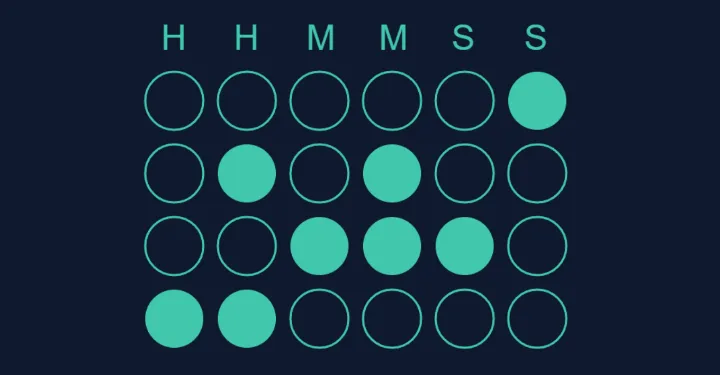A simple and easy to use binary clock, with a UI of the 21st century. Never use any other clock again!
Bin Clock at its core is just a binary clock. But it is a way more advanced one.
What makes it special?
BinClock got developed by 2 coders: Amir Ali Azimi and Ben Herbst.
Ben Herbst did build the web and mobile versions of it:
https://clock.benherbst.net/ and https://github.com/BenHerbst/BinClockMobile
Amir Ali Azimi did build the desktop version of it:
https://github.com/AmirAli-AZ/BinaryClock
As you see, this binary clock is not just a simple website. It is the first binary clock in history that is fully cross-platform.
It is the first binary clock that is not just a small, fun project.
How to get the web version?
Simply head over to https://clock.benherbst.net/ and use it. It's that simple!
You can find its code at https://github.com/BenHerbst/BinClock
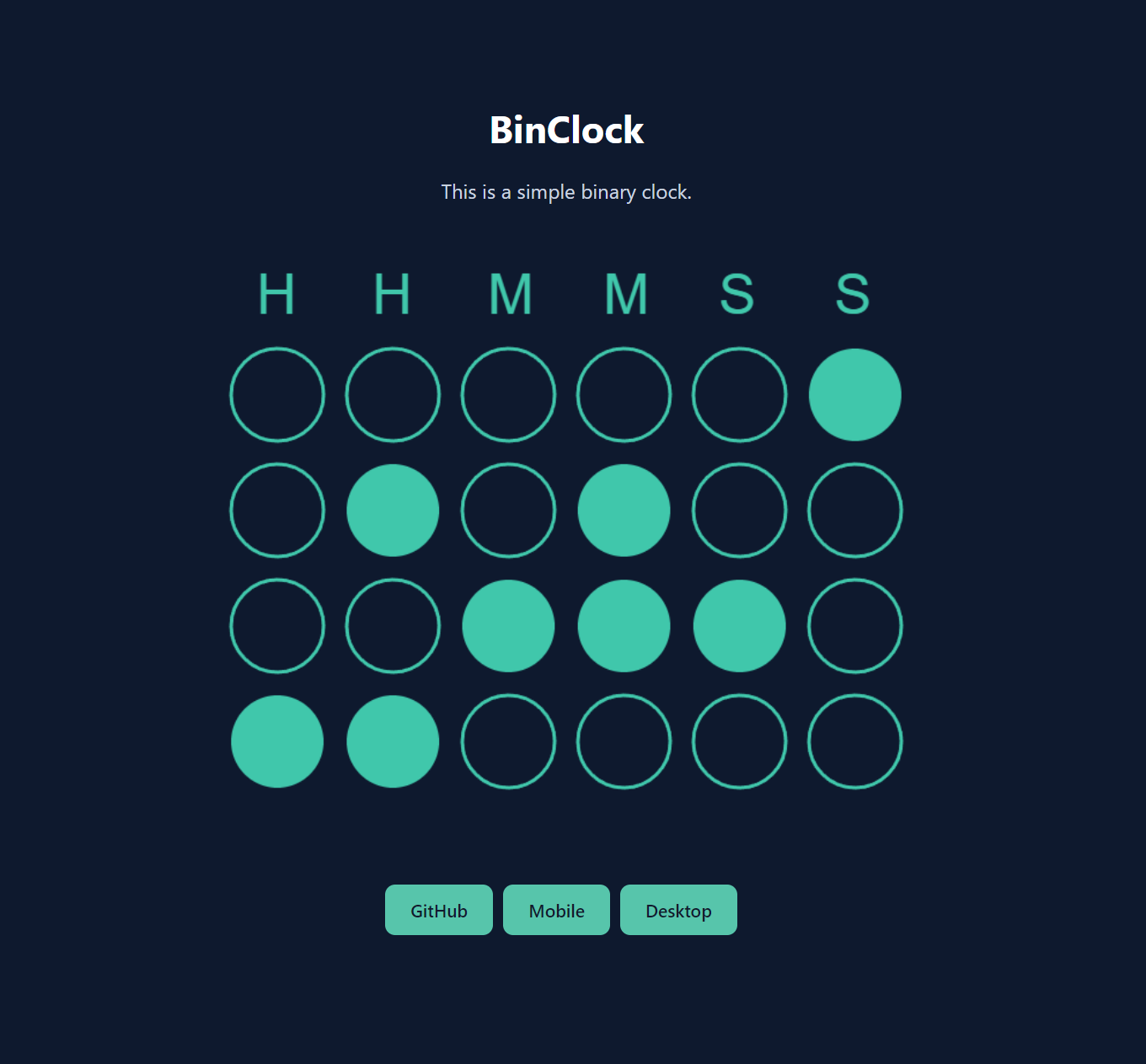
How to get the mobile version?
Soon it is going to the App Store and Google Play Store! For now, you can download the android APK in the release section.
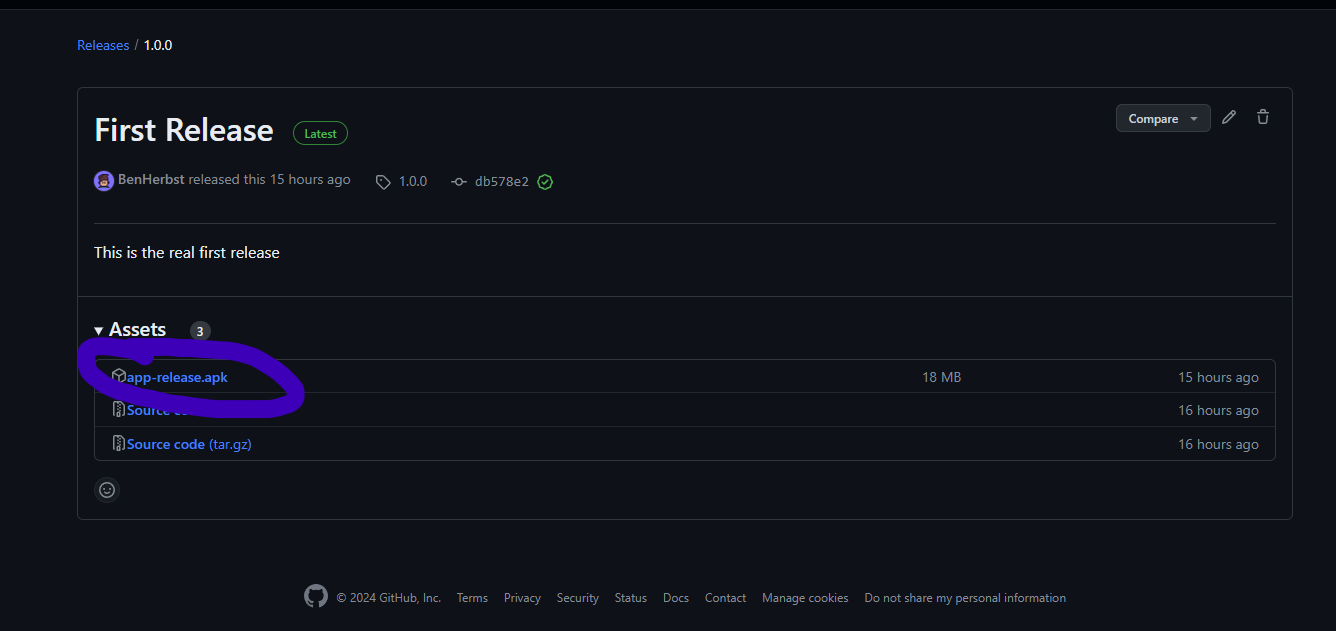
https://github.com/BenHerbst/BinClockMobile
https://github.com/BenHerbst/BinClockMobile/releases/tag/1.0.0
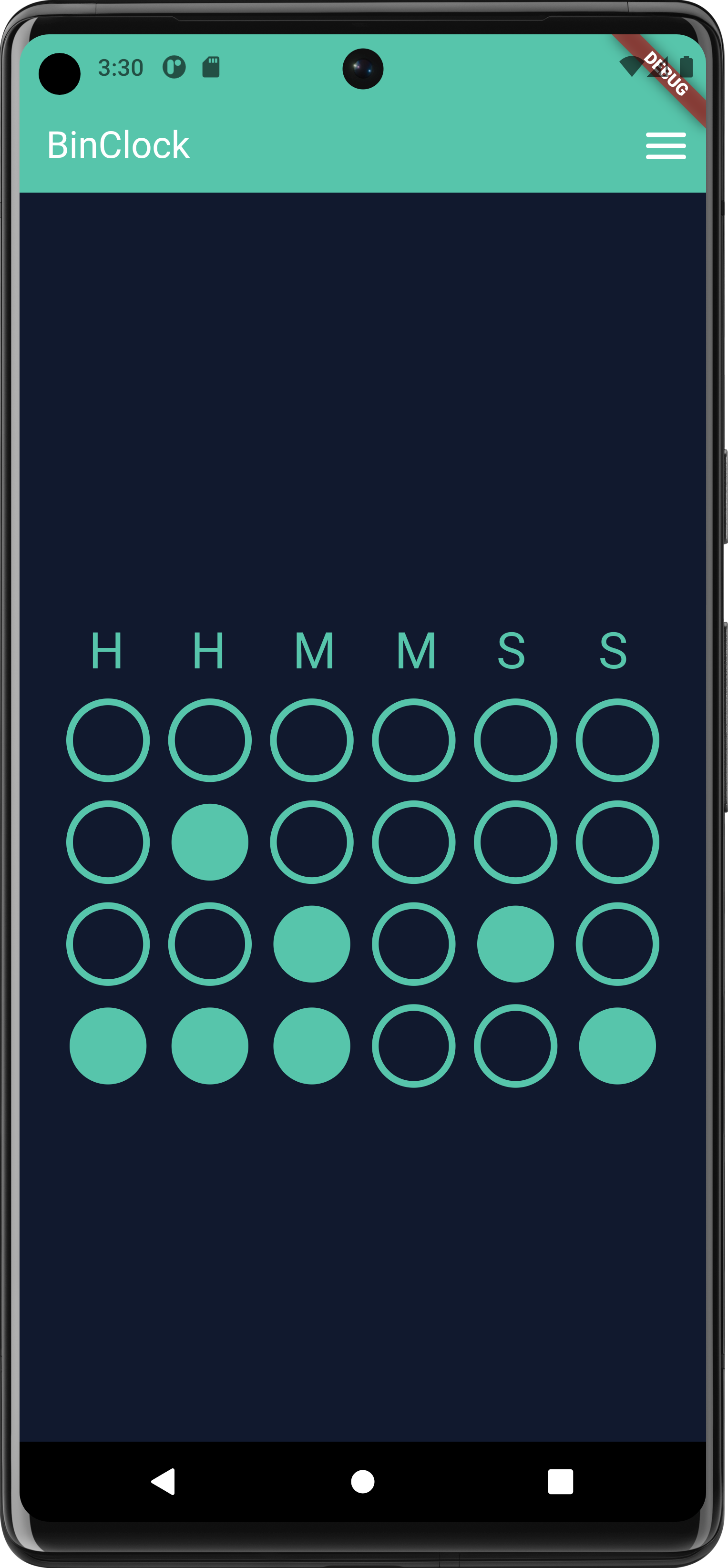
How to get the desktop version?
Very simple, just head over to https://github.com/AmirAli-AZ/BinaryClock and download it in the release sections, currently for Windows and Debian only.
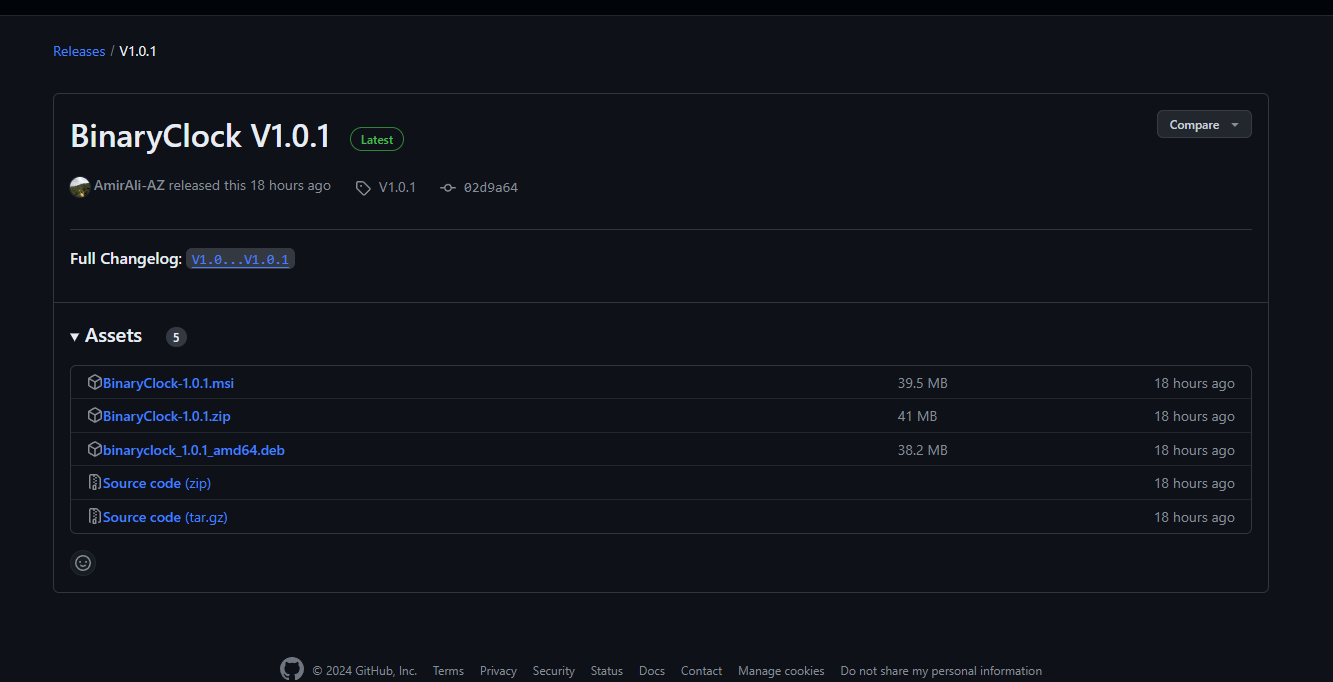
https://github.com/AmirAli-AZ/BinaryClock/releases/tag/V1.0.1
For macOS and other Linux distributions, you may self compile it, it is just Java with JavaFX; so super easy to create your own .jar or something!
Maybe the creators of BinClock will release a FlatPak or Snap soon too!

How to support the project?
Star it
The first and easiest thing to do, is give the repos a GitHub star 🌟!
And not just the web version, don't forget to star the Desktop and Mobile versions too!
Pull request
The next thing you can do is to create a pull request and help with the code, for example the mobile version possibly should provide a widget, and some cool people like Alexander Lichter did already do pull request!
Donate money
You may as well donate money to https://www.paypal.com/donate/?hosted_button_id=C5X9LBEM7XZ64 via PayPal or sponsor Ben Herbst directly in GitHub.
Every money donation is highly appreciated!
Share it
Another thing that really helps is to share the project with your Friends, Family other Coders etc.
You can share the GitHub links, this post here or https://clock.benherbst.net/
How it works
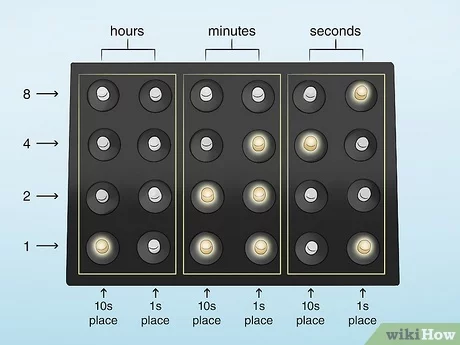
Binary clocks are unique timekeeping devices that represent the current time using binary code, which is a system of encoding information using only two symbols: 0 and 1. Unlike traditional clocks that use decimal-based time formats (hours, minutes, and seconds), binary clocks break downtime into binary-coded segments.
Here's a basic explanation of how binary clocks work:
Binary Representation:
Binary clocks typically have six columns and four rows of lights or digits to represent hours, minutes, and seconds.
Each column corresponds to a specific unit of time (hours, minutes, or seconds), with the HH:MM:SS format, and each light represents a 0 or a 1, and the position of the light in the Y-Axis tells its decimal number, which you then add up!
Hours:
The first two column represent hours and is divided into two segments
The first column represents the first digit in the hour, so 1 or 2. If the bottom light is on, its 1 and if the top one, its 2, so you can have things like 23:00, 12:00 or 11:00
The second column represents the last digit in the hour. The first row is 8, the second is 4, the third is 2 and the last is 1. When a light is on, that row is being added to the addition.
So you add all up where the light is on, and you can get times like: 8+1 = 9, 1 + 4 = 5, 1 + 2 + 5 = 7
Via this you can represent all the last digits in the hours like 14:00, 16:00, 17:00
Minutes:
The middle two rows represent the minutes, they work the same as the last row in the hours
Minutes:
The last two rows represent the seconds, they work the same as the last row in the hours
Binary clocks provide a visually intriguing way to represent time, and some people find them to be a fun and educational way to practice binary number recognition. While they may take a bit of getting used to, they offer a unique and modern approach to timekeeping.
Why not try it out?
Just try the web version out now, and if you like it, download the full versions!
